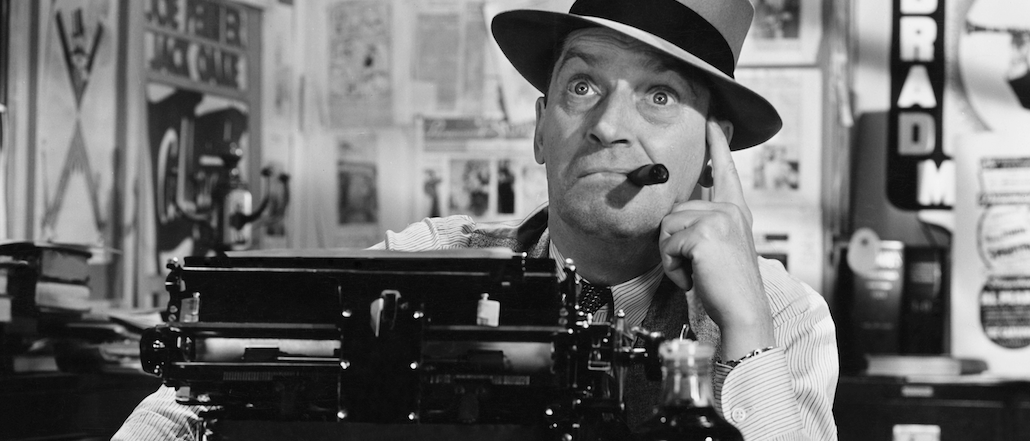Save 50% on a 3-month Digiday+ membership. Ends Dec 5.
‘You might as well get going’: Late newsroom start times have gone the way of drink carts and private offices

Staffers of The Boston Globe learned last week that as part of a newsroom reinvention, most of them would be expected to start work at 9 a.m. The memo from editor Brian McGrory read, in part: “We’ll be looking, soon, to get much of the room started earlier in the day, and impose rolling deadlines on enterprise stories through the day, to assure that we have a flow of fresh stories when people are most likely to read them. Still too many stories are posted on the site in the evening, because we’ve followed old-school print deadlines. That’s got to stop.”
McGrory added, “Foreign as this might seem, it is very doable.”
The need for the reassurance shows how, however far they’ve come, traditional newsrooms are still adapting to meet the demands of the web without neglecting a print product that in all likelihood is still the revenue driver of the organization. Born-digital media outlets never had to think about the constraints of print.
“Welcome to the modern era, Boston Globe,” chortled Nicholas Carlson, editor-in-chief of Insider, Business Insider’s general-news spinoff.
Carlson gets in at 8, and he’s not the earliest; the social media staff is in by 7:30. “In digital, you might as well get going,” he said. “There’s no deadline. There’s always a deadline.”
The Globe may be catching up, but the late-morning start time, never much tolerated in digital outlets, has gone the way of the long lunch, private offices and afternoon drink carts in other legacy newsrooms. Many of them are eager to prove they’re right in step with their digital-only brethren.
“At Travel + Leisure, where I’m embedded, we still technically have an in-office start time of 10, but for almost no one does the time you roll into the office represent the start of your day,” said Nathan Lump, editorial director of the Time Inc. Lifestyle Group. “I’m exchanging emails with [Time Inc. chief content officer] Alan Murray at 6:30 a.m.”
Ad position: web_incontent_pos1
Back when print dominated and staffs were fatter, you could build your schedule around the print publishing schedule, which for senior editors could mean sailing in after 10 and having a leisurely lunch (although to be fair, people often worked late into the evening on closing days). Print veterans recall those days as if talking about ancient times.
“Condé Nast was a late-start, long-lunch kind of place,” recalled Lump, who toiled there as an editorial assistant in the ’90s. “I do remember the old world, having worked at Entertainment Weekly,” said Kate Ward, editor-in-chief of Bustle. “I told my husband, I’ll never have a job where I start before 10. That was the way media was.”
Traditional publishers have had to get more efficient as staff sizes shrink and digital demands expand the workload. Now, if you haven’t published anything by late morning, you’ve missed a big traffic opportunity. “I don’t think people have rolled in at 10 a.m. for years now,” said Edward Felsenthal, group digital director at Time Inc., whose day starts with a 9 a.m. standing meeting. “If you’re still in a newsroom, you’re in a newsroom because you want to be part of the 24-7 conversation. Most people who couldn’t or didn’t want to make the adjustment are gone.”
The open office design in place at many newsrooms today has helped reinforce the trend. “It’s highly visible to everyone if someone’s around or not,” Lump said. “So the person who strolls in at 11, everybody notices that. There’s no slinking into the offices without anybody noticing.”
Of course, start times also are somewhat a function of geography. West of New York, people get going earlier. Brian Anderson, features editor at Vice’s Motherboard, rises before 6 and is in the office by 9. Back in his native Chicago, he said, “people were getting their day going at 8 or 9,” whereas “the unspoken law in New York is, the day starts in earnest at 10 a.m. That feels late to me.”
Ad position: web_incontent_pos2
As digital media has matured, also gone are the days when long hours at those newsrooms were a point of pride, though. In the early days of BI, Carlson said he’d be up at 5:30 to get working on the site at 6:30. Now, the company has a U.K. bureau that can handle the early-morning shift.
“There was an era where digital media companies were like sweatshops,” he said. “Now these companies have been around 10 years, and there’s a better way to organize our output that doesn’t lead to burnout.”
More in Media

What publishers are wishing for this holiday season: End AI scraping and determine AI-powered audience value
Publishers want a fair, structured, regulated AI environment and they also want to define what the next decade of audience metrics looks like.

Digiday+ Research Subscription Index 2025: Subscription strategies from Bloomberg, The New York Times, Vox and others
Digiday’s third annual Subscription Index examines and measures publishers’ subscription strategies to identify common approaches and key tactics among Bloomberg, The New York Times, Vox and others.

From lawsuits to lobbying: How publishers are fighting AI
We may be closing out 2025, but publishers aren’t retreating from the battle of AI search — some are escalating it, and they expect the fight to stretch deep into 2026.
Ad position: web_bfu




